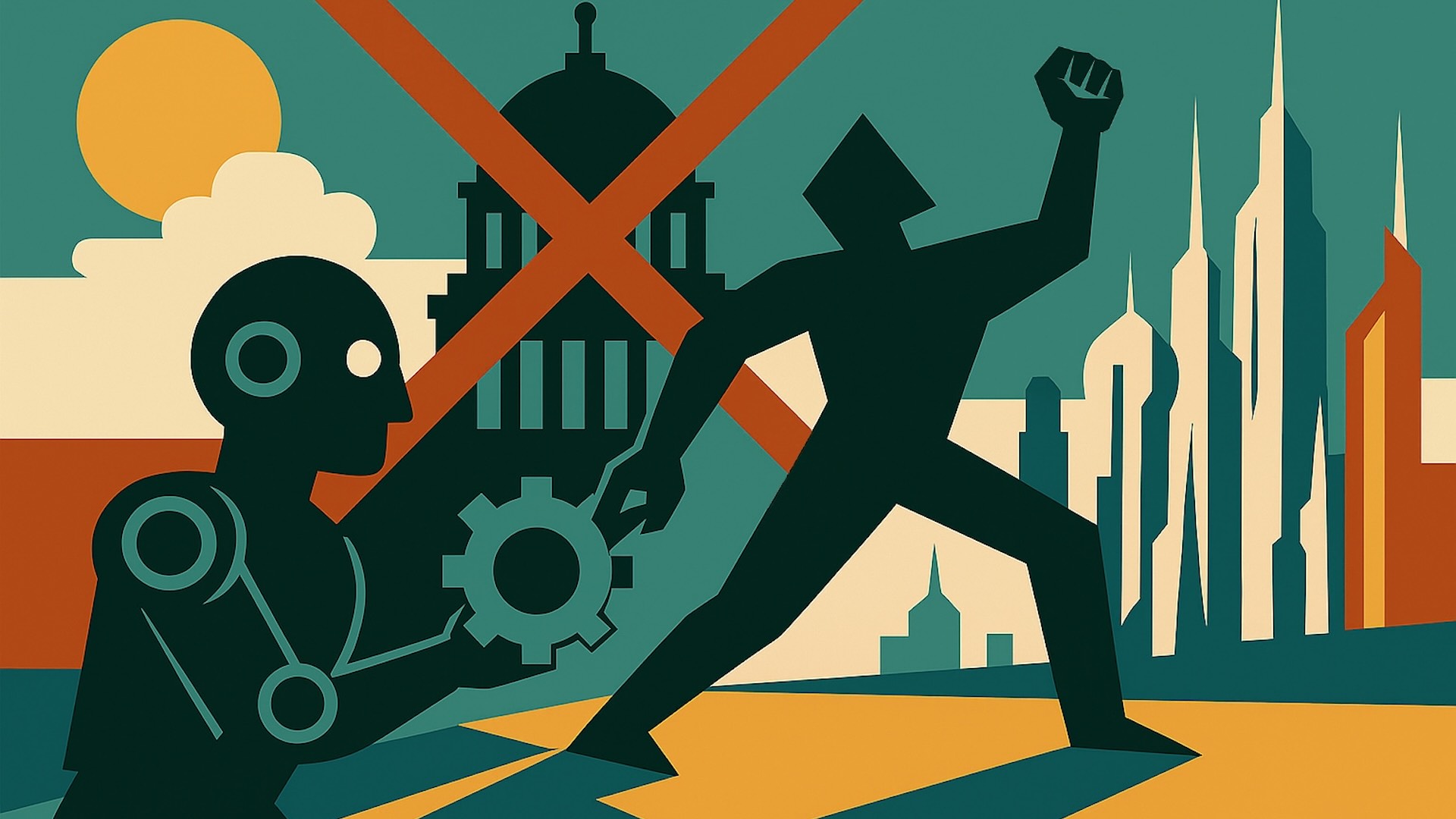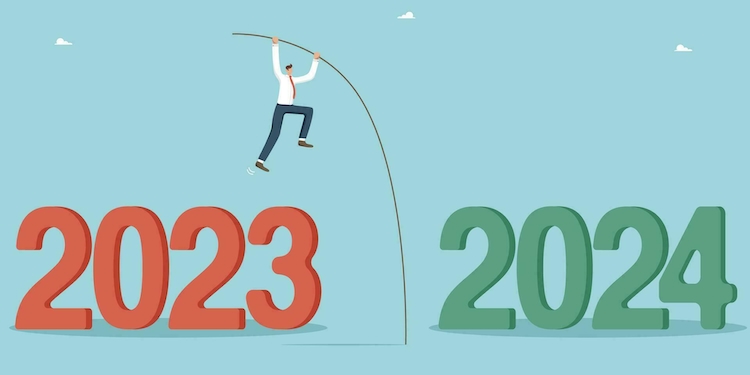Last week, the U.S. government shut down.
On October 1, 2025, funding lapsed when Congress couldn’t pass appropriations legislation (a fancy way of saying “a bill that funds things”). As of today, October 7, there’s still no deal, making this the 4th longest shutdown since we started doing this peculiar dance in 1980, the year before I was born.
If you’re curious, Trump has the dubious honor of presiding over 27% of all government shutdowns (3 out of 11 total shutdowns). Unless you measure by “days shut down”, in which case his number is 49%… and counting (45 out of 92 total days shut down).
Personally, I’m more interested in other numbers, like… how many people are impacted by a shutdown like this?
As of today, the total furloughed (temporarily laid off) appears to be around 620,000, but this number is likely to be climbing quickly; it would be higher already, but agencies are utilizing things like carryover funds from last year to temporarily keep people working. Over a million government employees are currently working without pay because they’re classified as “essential” — this number is huge because it includes military personnel. The White House is threatening to not give these folks back pay, and there are also hundreds of thousands of federal contractors, not employees, who may not be eligible for back pay at all.
So, if you were wondering, this isn’t anything resembling a “vacation” for federal employees, y’all, though God knows they need it. Quite the opposite in fact. How many weeks can YOU go without a paycheck?
What else does a shutdown do? The economy takes a real hit. Estimates range from ~$7B to ~$15B in GDP lost every week of shutdown, so even a short standoff burns billions.
This isn’t just detached bureaucracy drama, of course. This is impacting people, just like you and me, who have families to care for, rent to pay, and food to buy. It’s also paralyzing the public infrastructure we all count on — it’s permits and research and cybersecurity and flights and many more essential things.
When Air Travel Stops, Everything Stops
Speaking of flights, here’s another warning signal flashing red.
According to CNN just this morning, the shutdown is already starting to strain air travel, with delays being reported yesterday in Burbank, Phoenix, and my hometown, Denver.
If you recall, air travel was the falling domino that ended the longest government shutdown on record back in Trump’s first term. That one stretched 35 days, from December 2018 to January 2019, and it finally broke because 10 air traffic controllers stayed home, disrupting air traffic across the country. (Pretty powerful what 10 essential workers can do!)
This specific part of the shutdown hits me and many of my speaker friends personally, of course. We rely on our air traffic infrastructure to do our jobs — I have to be in Milwaukee next week to give a talk (I’m now wondering if I need to move my flight earlier to make sure I get there in time).
Beyond my travel, though, this shutdown makes me think about all the other travelers: people going on a vacation they’ve been planning for the last two years, people who are expected at reunions, people traveling to see sick or dying relatives… we ALL rely on this particular structure so we can live lives that are worth living.
Air traffic control is what economists call a “safety-critical infrastructure.” Like so many systems, it’s completely invisible… until it isn’t.
As the CNN article put it: “A 24/7, 365 days-a-year safety-critical operation, which supports 5.2 percent of national Gross Domestic Product, should never experience a lapse in appropriations.”
Exactly.
So, both our personal safety and our a big chunk of our economy is now dependent on people who are working without pay. That’s not just political dysfunction or economic ineptitude — it’s also moral insanity.
But it perfectly illustrates a larger point: when our governmental systems are designed more around short-term fighting instead of long-term stability, they will eventually fail in ways we all feel — at the airport, in the grocery store, at the hospital, everywhere.
Meanwhile: The Private Sector Is Building Tomorrow
While the public sector is flinching — hard — the A.I. build-out is soaring.
McKinsey estimates that globally we will see $6.7 trillion in data-center capital expenditure happening in the next 5 years, with ~$5T tied to A.I.-intensive workloads. We’ve got half a trillion dollars committed to OpenAI’s Stargate project and Citigroup projecting that U.S.-based big tech companies alone will spend more than $2.8T on AI-related infrastructure by 2029.
These numbers make our heads spin, and if you’re not firmly in the “tech nerd” category you might be wondering what all this spending is for, anyway.
Think of this as building the “technological substrate” of the next era: it’s a foundation of compute, power, cooling, and networking. It’s our capacity to process huge amounts of data. Basically: right now we aren’t able to process as much data as we think we want or need to, so we’re building the ability to process more. Lots more.
While this is admittedly exciting from a technological perspective, the juxtaposition of this spending spree against the backdrop of a complete shutdown of the most powerful government in the world just feels… bizarre.
Put simply: our government can’t pass a budget, while companies are committing trillions to build the tomorrow they want.
There are a lot of headlines floating around right now, but that contrast is MY headline for the week.
This Is NOT “Government Bad, Private Sector Good”
Let me be extra clear: this isn’t a morality contest where one side gets to be the hero.
I want you to see that BOTH systems are failing us — because both are built on extraction.
- The public sector is trapped in a lack of vision and short-term political cycles that completely destroy long-term investments in pretty much anything… and it’s even making short-term cooperation feel like a nonstarter. Our current “public” sphere feels completely incapable of caring for, or even supporting, most of us.
- The private sector has a longer vision, but it is bound to quarterly returns and shareholder primacy, which means it will largely be at odds with long-term human flourishing and planetary resilience. Our current “private” sphere feels deeply predatory and incentivized to prioritize profits over wellbeing.
So the story isn’t “public bad, private good.”
It’s two extractive operating systems that were never actually designed to regenerate the resources we want and actually depend on: things like human energy, ecological balance, social trust.
These are the things that a good life is made of, and neither of our current systems are supporting them.
The Commons: A Forgotten Operating System
What’s the alternative?
I believe we need a rebirth of The Commons.
Historically, “The Commons” meant the things we all shared: grazing lands, waterways, forests, irrigation systems, and so on. It’s the living infrastructure that makes survival possible. They weren’t owned by anyone, because they belonged to everyone. And for centuries, local communities figured out how to steward them together.
Then came the myth of the Tragedy of the Commons — a phrase you might be more familiar with than just “The Commons.” This is the idea that shared resources will always be overused and destroyed because people are selfish. But that story was never based on real evidence. It was an economic parable written by a biologist named Garrett Hardin in 1968. But it became a justification for privatizing almost everything.
Decades later, Nobel laureate Elinor Ostrom proved Hardin wrong. Through meticulous fieldwork — from irrigation systems in Nepal to fisheries in Turkey — she showed that communities can manage shared resources sustainably when they have clear boundaries, mutual trust, and agreed-upon rules for use and replenishment.
In other words: when the people actually talk to each other.
Which brings us to now.
Because in 2025, The Commons isn’t just about land or water anymore, is it.
It’s the internet, the atmosphere, the power grid, the public health system, the digital knowledge base we all draw from. It’s even the attention economy — the collective pool of human focus that’s being incessantly mined and monetized by algorithms.
Every one of these shared spaces is being enclosed and exploited by systems designed to extract out of them as much value as possible, as fast as possible.
And here’s where The Common Good comes in. This is an even deeper operating principle that goes all the way back to Aristotle and Aquinas. They argued that the purpose of governance isn’t to protect private wealth or secure short-term wins, but to cultivate the conditions under which everyone can thrive.
It’s not “socialism” or “capitalism.” It’s just… civilization. Citizens, people like you and me, trying to live a good life.
We’ve lost that frame. Public life has been captured by partisan trench warfare. Private life has been hijacked by shareholder value. And somewhere in between, the idea of common stewardship has evaporated.
This is why we feel so unmoored.
Because the operating system we’re running on — the code that organizes our priorities — no longer matches what life on this planet actually requires.
The Commons is the missing OS.
It’s the upgrade we desperately need…
- from ownership to stewardship,
- from extraction to regeneration,
- from competition to collaboration.
Feels right, doesn’t it?
The Question Currently Haunting Me
The other day while doomscrolling on Instagram (yeah, the vortex still pulls me in sometimes), I saw a post I can’t get out of my brain.
Here’s the line that won’t leave my head:
“If humans need it to stay alive, it should not be for profit.”
Sit with that.
I have been.
Is it true?
If yes, then a lot of our world is upside down.
Food. Energy. Healthcare. Housing. Knowledge.
Nearly all of our survival systems are structured as profit centers, especially here in the United States.
What if we treated core survival infrastructure as Commons instead of commodities to be bought and sold?
The Shutdown as Symbol; Closing With Optimism
Yes, the shutdown is a policy failure. But symbolically, it’s more: a signal that extractive governance is hitting its wall. A system optimized for short-term battles can’t meet long-term needs.
Maybe a rupture was inevitable.
But ruptures are dangerous: vacuums can empower the worst actors if the good rebels don’t stand up and do something.
Collapse without vision empowers the worst actors.
So the assignment for those of us who care about tomorrow is clear: carry the vision.
Keep your eyes on the future you actually want — and build toward it… now.
What can you do? Can you help sketch blueprints for commons-based systems? Can you help build technology that’s in the common interest? Can you invest in a big or small way in the common infrastructure of life? Can you tell stories that make regenerative futures feel obvious and exciting?
And if you’re too tired for any of that today, I get it.
Perhaps you can spread this message to just one person you think needs to hear it?
Because while the government shuts down, tomorrow is still being built.
The first question is: “By who, and for what?”
But the next question is: “What can I do to help build something better?”


